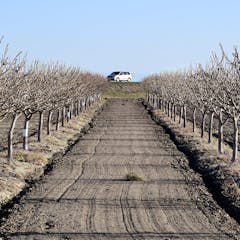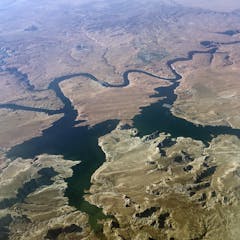
Articles on Aquifers
Displaying 1 - 20 of 24 articles

Rapid and accelerating groundwater level declines are widespread in dry climates where groundwater is used for irrigation. But some communities have found ways to turn things around.

Saltwater intrusion is bad for human health, ecosystems, crops and infrastructure. Here’s how seawater can move inland, and why climate change is making this phenomenon more frequent and severe.

We need a radical rethink of water resource planning. Strategies should include reusing water and moving water physically to water-scarce areas.

Groundwater has the potential to support broad economic, humanitarian and social development in sub-Saharan Africa, as it has in other regions globally.

As surface water diminishes in the Western US, people are drilling deeper wells – and tapping into older groundwater that can take thousands of years to replenish naturally.

The US has one of the highest groundwater use rates in the world. When wells run dry, households may opt to conserve water, find new sources or sell and move.

The Supreme Court recently dealt defeat to Florida in its 20-year legal battle with Georgia over river water. Other interstate water contests loom, but there are no sure winners in these lawsuits.

Drought-driven humanitarian emergencies can be prevented if groundwater is reliably made available at strategic locations.

Many African countries tend to mismanage their groundwater resources.

Groundwater is often seen as a resource that never runs out. This isn’t true.

The Ogalalla Aquifer is a vast underground lake that irrigates farms across the US Great Plains. It took thousands of years to fill, but human use could drain it in roughly a century.

Perth, unlike Cape Town, faces no prospect of its tapwater running out. But other problems lurk beneath the surface, as the city’s drying climate puts increasing pressure on irrigation and wetlands.

Groundwater is out of sight, but it shouldn’t be out of mind. As cities struggle to cope with drought, we should remember that our largest stocks of water are hidden deep underground.

At present, the Middle East and North African region contains 7% of the world’s population but only has access to 1.5% of its renewable freshwater supply through rainfall.

Millions of livelihoods depend on the Indus Basin aquifer.

There’s enough water under the ground to form a lake 100m deep over the earth.

The digging of wells in Africa has often been thought of as the solution to helping rural women walking to get water, but they may cause more harm than good.

Built-up urban environments transform the resource of rainwater into wasted runoff. Low Impact Development mimics nature to help get stormwater into the natural water system.

The Queensland government wants companies to use waste water from coal seam gas extraction for useful purposes such as recharging aquifers. New CSIRO research shows that, with careful monitoring, it can be done.

In a recent article on The Conversation, Queensland coal seam gas (CSG) researchers argued that the industry is progressing faster than the science, leading to concerns over fugitive emissions and impacts…
